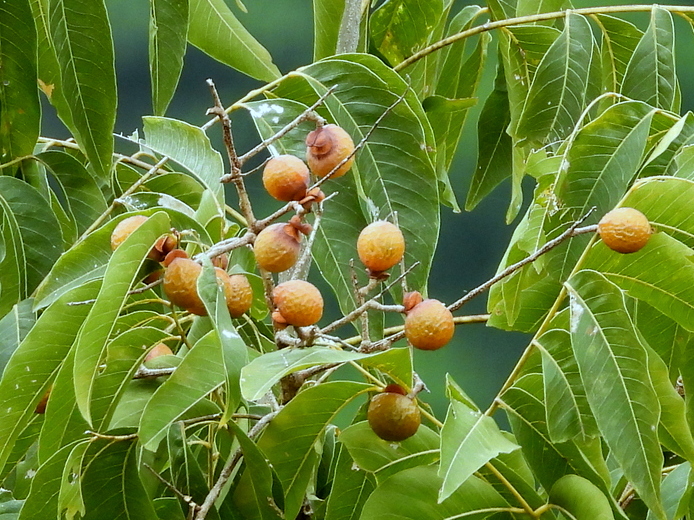
Scientific Name : Sapindus mukorossi Gaertn.
Category : Angiosperms
Status : Alive
Reetha is a common tree in Shivalik Hills and the outer Himalayas. It is a deciduous tree, growing to 25 m tall. Reetha leaves are long stalked odd pinnate. The leaf spine is nearly 30-50 cm long and bears 5 to 10 pairs of leaflets. An individual leaflet is about 7-15 cm long and 2-5 cm wide. It has a tapering tip, and is lance-shaped. The size of leaflets towards the tip of the rachis is smaller. Reetha flowers during summer. The flowers are small and greenish white, polygamous and mostly bisexual in panicles at the end of branches. These are nearly stalkless and numerous in number. The fruit appears in July-August and ripens by November-December. These are solitary, round nuts 2-2.5 cm diameter, fleshy, yellowish brown in color. The seed is enclosed in a black, smooth and hard globose covering. The fruit is collected during winter months for seed and or sale in the market as soap nut. The dried fruit of Ritha is most valuable part of the plant. Its fleshy portion contains saponin, which is a good substitute for washing soap and is as such used in preparation of quality shampoos, detergents, etc. In fact the skin of the fruit is highly valued by the rural folks as a natural produced shampoo for washing their hair. They also use these for washing woolen clothes.
Specimen Information
-
Common Name(s):
रीठा, Reetha, Chinese Soapberry, North Indian Soapnut, Washing Nuts
-
Synonym(s):
Sapindus abruptus Lour. Sapindus acuminatus Royle Sapindus boninensis Tuyama Sapindus indicus Poir
-
Family:
Sapindaceae
About Me:
-
Created By:
admin
Botany Department (DVP College, Nimgaon Sawa) -
Created On:
03-09-2022
-
Contact:
Phone: 9960072282
Email: [email protected]
Find Location:
Photo Gallery








